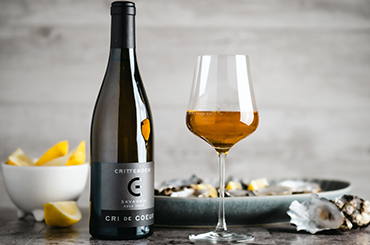In 1963, the Mildara winery in Coonawarra grew a cabernet sauvignon that went on to become a legend of Australian wine. It was intense, ripe and structured at once, its “sweet pepperminty perfume able to be smelled down the block”, as Halliday Tasting Team member Jeni Port once wrote. This wine is so legendary that it has a nickname: Peppermint Patty. The grapes had taken on the aromas and flavours of nearby peppermint gum trees, or similar, and these characters had shone through brilliantly in the wine, in the glass. The wine was celebrated for it.
The 1963 Mildara Cabernet Sauvignon is a great Australian wine because of the quality of the grapes, and the oak, and the winemaking, and the season. But it’s also a great Australian wine because it’s so quintessentially Australian. There are few things more Australian than the smell of gum trees, eucalypt and mint.

Fast forward to 2023 though and mint and/or eucalyptus characters in Australian wine are now generally frowned upon, or at least seen as ‘not ideal’. There’s now a war on mint. A few years ago, I was aghast to see a long row of glorious, fully mature gum trees being removed from the side of a Yarra Valley vineyard because of the peppermint characters they had been judged to impart.
There’s a general view – at least among winemakers and wine judges, if not necessarily among wine drinkers – that eucalyptus is a kind of ‘white noise’ and that, where possible, it needs to be eliminated or at least minimised.
To give you an idea of how fanatical some people are on this – a couple of years ago I was tasting with a winemaker who, after I’d made positive noises about his wine, commented: “I saw a single gum leaf fall into the ferment while we were plunging it and before I could fish it out it had disappeared out of sight, and now every time I taste this wine all I can think of is that gum leaf, and how much better the wine would be if we’d been able to pluck it out.”

Personally, I’ve been on a journey with mint and/or eucalyptus characters in wine. When I first started falling in love with wine, 30 or so years ago, I no doubt enjoyed these characters. I cut my fine-wine teeth on Wynns Black Label Cabernet Sauvignon and Penfolds Bin 389 Cabernet Shiraz (back when it was affordable), and the choc-mint characters inherent to these wines then was a key part of their appeal.
I remember though a night when a friend described a central Victorian shiraz as “koala juice” thanks to the overtness of its eucalypt flavours. For a good number of years after that I looked at eucalypt and mint in wine differently, and to some extent stopped enjoying them. In this period, I likely gave lower scores to wines that showed overt eucalypt.
I’ve gradually come away from this view though. Again, I enjoy eucalypt in wine, and certainly don’t grade wines lower when these characters are overt. The best and most delicious wines in the world are the best-balanced ones though, and so of course if eucalypt drowns out the fruit characters, to the point of imbalance, then certainly I’d mark such a wine down. It has to be acknowledged, too, that it’s much easier for mint and eucalypt characters to throw the balance of lighter or more delicate wines out, and so I’m likely to be harsher on eucalypt levels in wines, for instance, made with pinot noir, nebbiolo or grenache.

I love the fact though that (the producer) Patrick of Coonawarra makes a cabernet sauvignon called Méthode Eucalypt in celebration of these very characters – the ultimate act of modern wine rebellion.
And I also love what I heard from Taylors’ winemaker Adam Eggins recently. He put a wine in front of me – Taylors Masterstroke Cabernet Shiraz 2020 – that was not only delicious, but showed quite pronounced peppermint characters. It’s made with grapes from Coonawarra, as the famous Peppermint Patty was. Adam said, “We had a grower come to us and offer us some really good grapes for sale, and when we asked what had happened to their previous buyer the grower replied, they now find them too minty.”
Kudos to Taylors for bucking that trend, and for serving up a red wine that most Australian red wine drinkers will love. Adam also pointed out that in overseas markets, both on the ground and at international wine shows, eucalypt and mint characters in Australian red wines are viewed overwhelmingly positively. As, I would argue, they should be.
Image credits: Taylors/Anson Smart/Wynns/Patrick of Coonawarra.
Latest Articles
-
From the tasting team
From Marlborough to Martinborough: a quick guide to New Zealand wine
2 days ago -
News
The heart of Aotearoa: How a connection to Māori culture and land shapes New Zealand wine
2 days ago -
Win
Win a stunning collection of Plumm glassware and wine, valued at over $500
11 Dec 2025 -
From the tasting team
The Aussie wines the Halliday Tasting Team will be opening this festive season
11 Dec 2025







